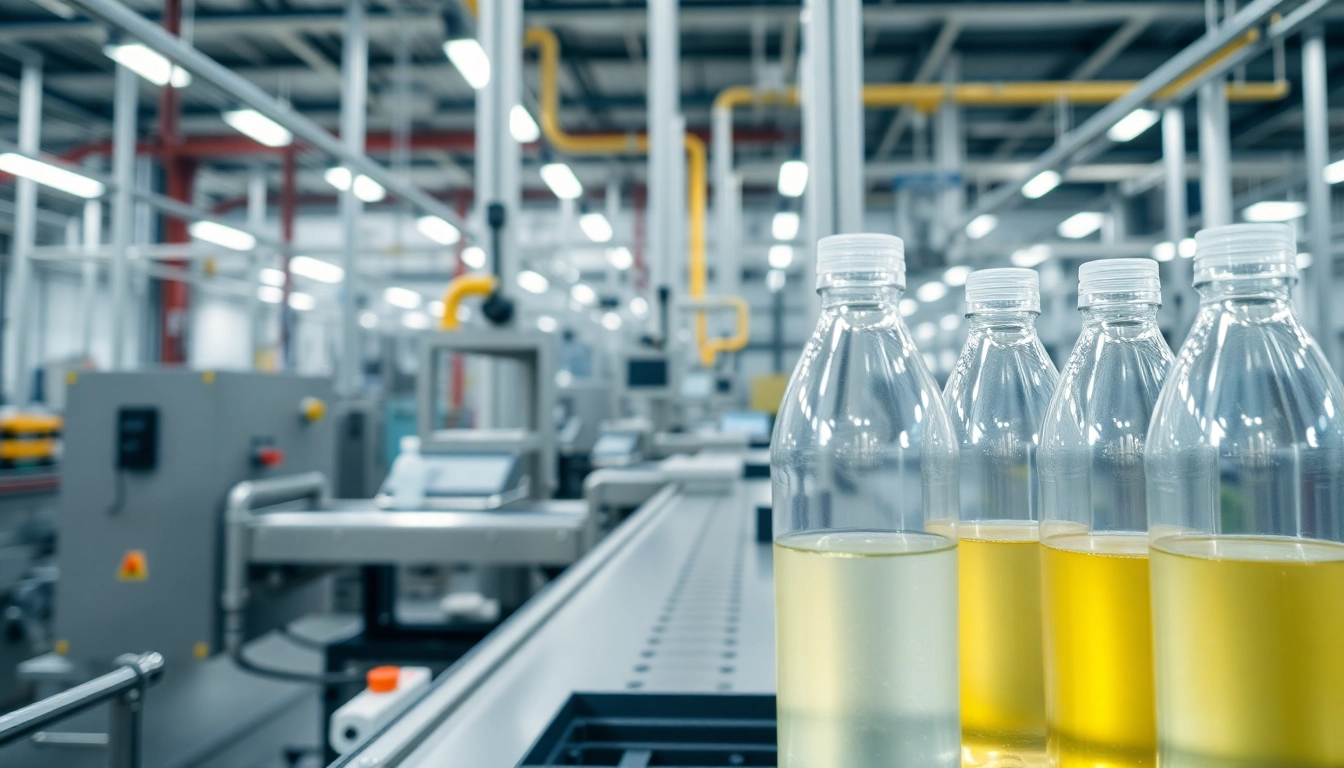Understanding Polyethylene Bottles: Materials and Manufacturing Processes
Polyethylene bottles, commonly known as polietilen şişe, have become an integral part of various industries, including food, beverages, cosmetics, and industrial chemicals. Their popularity stems from their versatile application possibilities, durability, and cost-effectiveness. To fully appreciate their significance, it is essential to explore their composition and manufacturing processes, which are fundamental to their performance and quality.
What is Polyethylene Bottle and Its Composition
Polyethylene bottles are containers manufactured from polyethylene, a highly durable and chemically resistant thermoplastic polymer. Its chemical structure consists of long chains of ethylene monomers (C₂H₄), which can be processed into various forms depending on the manufacturing technique and specific grade. Polyethylene (PE) exists mainly in two variants: High-Density Polyethylene (HDPE) and Low-Density Polyethylene (LDPE). Both are widely used in bottle production but differ in density, crystallinity, and physical properties.
HDPE, characterized by its high strength and rigidity, provides excellent resistance to impact and chemicals, making it ideal for food-grade packaging and industrial containers. LDPE, on the other hand, offers greater flexibility and is used where malleability is necessary. Other variants include linear low-density polyethylene (LLDPE) for specific applications requiring a balance of flexibility and strength.
This structural versatility allows polyethylene bottles to meet a broad spectrum of needs, from lightweight beverage containers to chemical drums, and all are designed to meet strict safety standards, particularly for food contact materials.
Manufacturing Techniques for High-Quality Polyethylene Bottles
The manufacturing process of polyethylene bottles involves several technical steps designed to optimize physical properties while ensuring safety and longevity. The primary methods include:
- This is the most common method for producing polyethylene bottles. It involves extruding a hollow tube (parison) of melted polyethylene, which is then clamped into a mold. Compressed air is blown into the parison, expanding it to fit the contours of the mold. This technique allows for high-volume production with uniform quality. Advanced blow molding machines ensure precise control over wall thickness, improving durability and reducing material waste.
- Preform Injection Molding: Used primarily for PET bottles but applicable to certain PE variants, preform manufacturing involves creating a pre-shaped form that is later heated and blown into the final bottle shape. This method ensures excellent consistency and enables easier in-mold labeling.
Regardless of the method, modern manufacturing facilities incorporate strict quality control measures, including real-time monitoring of temperature, pressure, and cooling rates, that ensure the bottles meet industry standards for safety and performance.
Material Variations and Their Properties
Polyethylene’s various grades and formulations handle specific applications’ requirements. The main variations include:
- HDPE: Known for its toughness, chemical resistance, and high stiffness. It is often used in milk jugs, detergent bottles, and industrial containers. Its rigidity makes it less prone to deformation under stress.
- LDPE: Offers excellent flexibility, impact resistance, and transparency. Common in squeeze bottles and packaging films.
- LLDPE: Combines properties of HDPE and LDPE, providing good performance for stretch films and flexible containers.
The choice of material influences the durability, chemical compatibility, and safety of the finished product. For instance, bottles designed for food packaging must adhere to global safety standards, ensuring no harmful chemicals migrate into the contents.
Key Applications of Polyethylene Bottles in Industry
Usage in Food and Beverage Packaging
Polyethylene bottles dominate the packaging of consumables, especially beverages and liquids. Their lightweight and shatterproof nature make them ideal for water, juice, milk, and various cooking oils. Food safety standards necessitate the use of food-grade HDPE or LDPE, which are approved by regulatory authorities such as FDA and EFSA.
Furthermore, the ease of sterilization and inertness of polyethylene ensure product integrity over its shelf life. Innovations include resealable closure systems and ergonomic designs that improve user experience and extend product usability.
Industrial and Chemical Storage Solutions
In industrial settings, polyethylene bottles serve as containers for chemicals, detergents, and oils. Their resistance to corrosion and compatibility with a wide array of chemicals make them indispensable in this sector. The ability to produce various sizes—from small 250ml bottles to large 5-liter drums—addresses diverse storage needs.
Cosmetic and Personal Care Packaging
The cosmetic industry utilizes polyethylene bottles for products like shampoos, body lotions, and perfumes due to their clarity, lightweight nature, and ease of customizing shapes and sizes. The flexibility in design allows brands to differentiate their products visually while ensuring product safety and portability.
Benefits and Advantages of Using Polyethylene Bottles
Durability and Impact Resistance
The exceptional impact resistance of polyethylene makes bottles less prone to breakage during handling and transportation. This robustness reduces costs associated with product loss and damage, particularly in shipping and distribution processes.
Lightweight and Cost-Effective Features
Compared to glass and metal alternatives, polyethylene bottles significantly lower transportation costs due to their light weight. Manufacturing costs are also minimized through scalable extrusion and blow molding techniques, enabling affordable pricing for end-users.
Safety and Health Considerations
Polyethylene is regarded as a safe material for food contact, being non-toxic and chemically inert under normal conditions. It does not leach harmful substances into contents, provided manufacturing standards are maintained. Certified food-grade polyethylene ensures compliance with health regulations, further boosting consumer confidence.
Choosing the Right Polyethylene Bottle Supplier
Quality Assurance and Certification Standards
Selecting a supplier with ISO, FDA, or other relevant certifications guarantees that the bottles meet international quality and safety standards. An ideal supplier maintains rigorous testing routines, including chemical resistance, impact tests, and durability assessments, to assure product reliability.
Customization Options and Sizes
Leading suppliers offer extensive customization, including various sizes, shapes, closure types, and printing options. This flexibility enables businesses to tailor bottles to their branding and functional requirements, optimizing shelf appeal and usability.
Market Trends and Future Outlook
The industry is increasingly moving towards eco-friendly solutions, incorporating biodegradable materials or enhancing recyclability. Innovations such as lightweight design, barrier coatings, and smart packaging are shaping future trends, making the selection of a supplier that invests in R&D crucial for staying competitive.
Maintenance, Reusability, and Recycling of Polyethylene Bottles
Best Practices for Long-Term Use
Polyethylene bottles are highly reusable with proper cleaning and maintenance. Using appropriate sterilization techniques and avoiding prolonged exposure to extreme temperatures prolongs their lifespan. Proper storage and handling prevent deformation and contamination.
Environmental Impact and Recycling Methods
Recycling plays a vital role in reducing polyethylene waste. Post-consumer bottles are sorted, cleaned, and processed into pellets that can re-enter manufacturing streams. Facilities equipped with advanced sorting technologies enhance the efficiency and purity of recycled materials, supporting sustainability initiatives.
Innovations in Eco-Friendly Packaging
Research into biodegradable polyethylene variants and compostable composites is ongoing. These innovations aim to minimize environmental impact without compromising product performance. Additionally, brand initiatives encouraging consumer participation in recycling programs enhance overall sustainability efforts.



